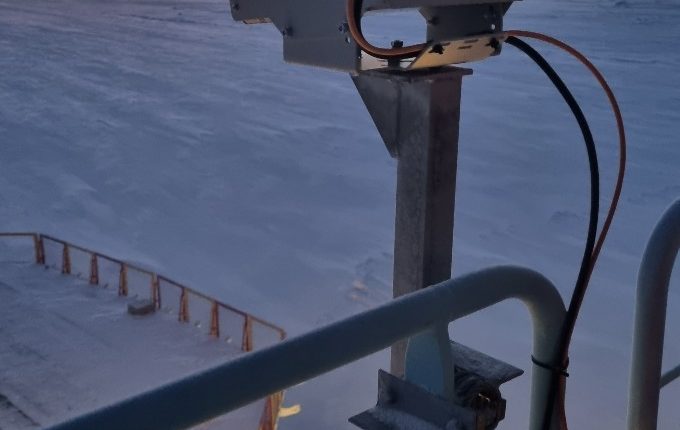Moscow – An onboard measurement system was tested in the Ob Bay of the Kara Sea. The system makes it possible to improve the accuracy of the ice situation forecasts to ensure the safety of navigation on the Northern Sea Route.
The onboard measurement system is a constituent element of the NSR digital ecosystem, which is being created by Rosatom NSR Administration on behalf of the Government of the Russian Federation. In addition to the measurement equipment, the system includes a single platform for digital services and a data fund, as well as an aircraft capable of taking off from an icebreaker and monitoring the ice situation within a 200 km radius.
“The NSR digital ecosystem is being created as part of the federal project “Development of the Northern Sea Route” within a comprehensive plan for the main infrastructure expansion. In two years, the federal budget will allocate 3.8 billion rubles for the development and launch of the NSR digital ecosystem. The work is planned to be completed in 2024, while the final commissioning is planned for 2025”, explained Maxim Kulinko, Deputy Director of Rosatom NSR Administration.
On board the “Ural” nuclear-powered icebreaker, there were installed four measurement systems: two in the sides, one in the bow and one in the stern. The values of five parameters of the ice situation are measured in real time. The bow equipment measures ice concentration and ridging while the side equipment measures ice thickness and the equipment in the stern measures the width of the shipping channel made by the icebreaker and the speed of its edges convergence.
In processing the data from the side LiDARs, a 3D model of the ice cover is built using a special mathematical algorithm, which makes it possible to distinguish snow from ice and evaluate their thickness with an error of 3 cm. The ice concentration is evaluated by a mathematical algorithm according to the method specially developed for onboard measurement systems. The data from all four measurement units with reference to geographic coordinates and time at each specific measurement point are automatically transmitted to the icebreaker captain, which allows him to quickly make decisions that increase the safety of vessel escorting, and to the Marine Operations HQs of the NSR General Administration to draw up-to-date ice maps and issue recommendations on the NSR passage to ships.
The system was developed at the Marine Fleet Central Research and Design Institute by order of Rosatom. “Our LiDAR (a space-scanning laser) -based system can “see” through darkness, blizzard and fog,” explains Alexander Buyanov, Deputy Director of the Institute. The system uses infrared radiation, the main wavelength of the source involved is 903 nm. It is noteworthy that the Arctic environment cannot affect the equipment which is placed in a hermetically sealed thermostable case ensuring reliable operation of the measurement system at temperatures down to 50 degrees below zero.
In the near future, such systems that improve the accuracy of ice situation forecasts will become an integral part of the NSR digital ecosystem. In particular, this refers to the full digitalization of ship passage permits issuance, as well as to the fleet operations monitoring, dispatching and control. This requires the solution of the problem of parallel processing of a whole range of heterogeneous parameters: the number and relative position of the rescue fleet vessels, hydrographic data, recommended NSR routes, weather conditions and the actual coordinates of ships, including icebreakers. As a result, users will be offered a client-oriented service greatly facilitating the travel time estimation and optimizing the trajectory along a given route.
Based on the test results onboard the nuclear icebreaker “Ural”, the developer of the onboard measurement system will prepare the documentation to start the serial production of the equipment. It is planned to equip more than 30 Arctic vessels with these systems.
The comprehensive development of the Russian Arctic is a national strategic priority. To increasing the NRS traffic is of paramount importance for solving the tasks set in the area of goods transportation and delivery. The development of this logistics passage is ensured through the organization of regular cargo transportation, construction of new nuclear-powered icebreakers and modernization of the relevant infrastructure. Rosatom takes an active part in this work.


Comments are closed.